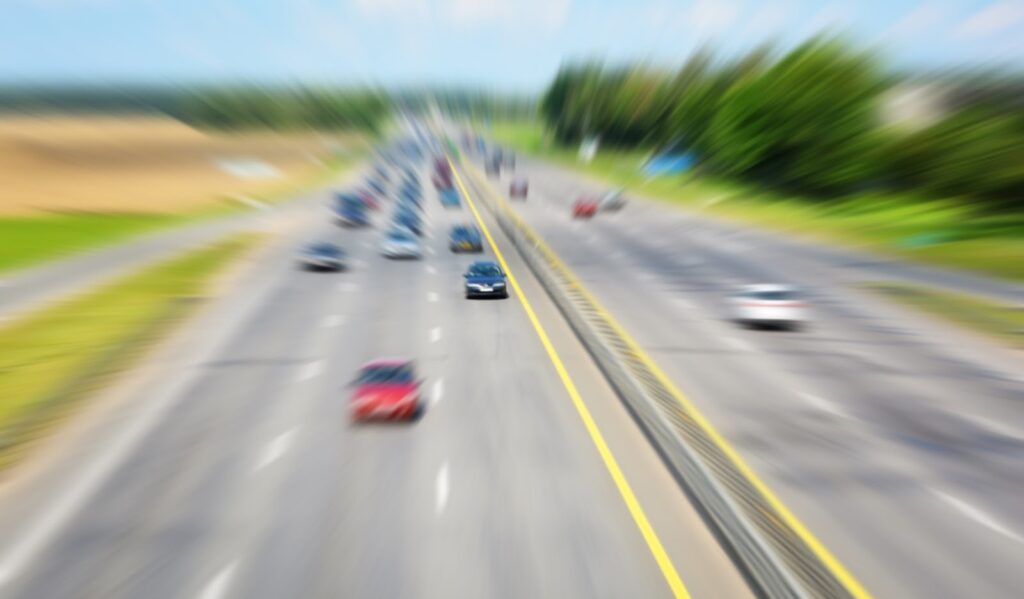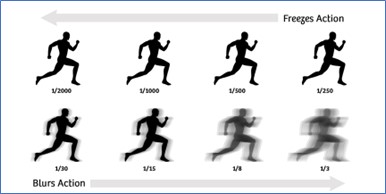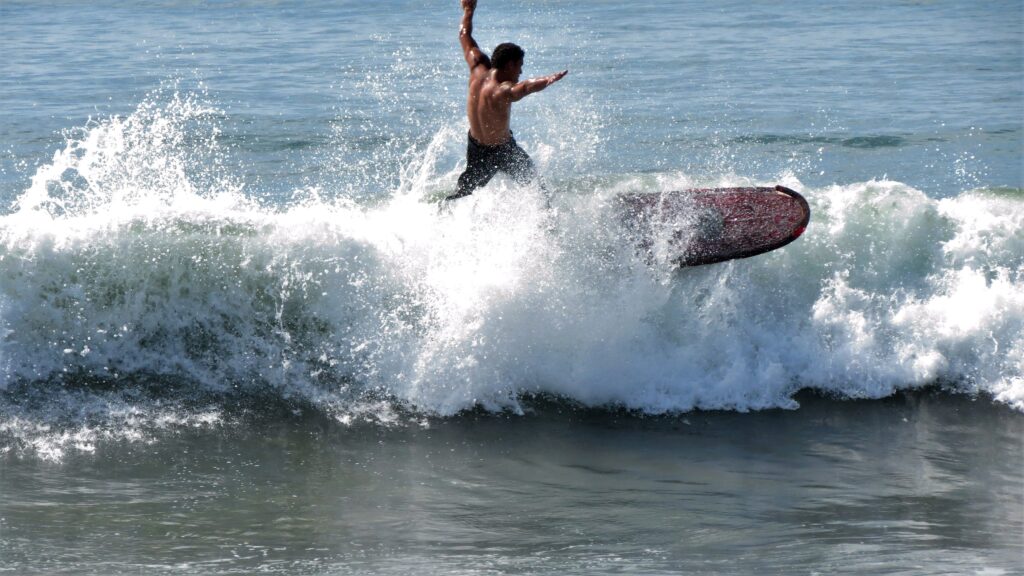
Photography is an art that requires a great deal of skill and knowledge. One of the critical aspects of photography is understanding how to control the shutter speed setting, which makes all the difference in the outcome of your photos. Adjusting your shutter speed lets you capture motion and create exciting movement in your photos.
Let’s check out the relationship between shutter speed and motion blur, plus tips for beginner photographers on how to master this technique.
Understanding Shutter Speed and Motion Blur

Source: Craft Film School
Shutter speed is how long your camera’s shutter stays open when taking a photo. The length of time determines how much light enters the camera and how much motion the photo captures. If the shutter speed setting is too slow, the photo will be blurry due to motion blur. On the other hand, if your camera’s shutter speed setting is too fast, the photo will be too dark because not enough light enters the camera.
Motion blur is the effect that occurs when there is movement in the photo during the exposure time. For example, if you are taking a photo of a moving car and the shutter speed is too slow, the car will appear blurry in the photo. However, if you increase the shutter speed, you can freeze the motion and capture a sharp image of the car.
Choosing the Right Shutter Speed for Different Types of Motion Blur
The right shutter speed for capturing motion depends on the motion type you are trying to simulate. Use a fast shutter speed for fast-moving action like a sports event. We recommend a shutter speed of 1/500 or faster for this type of photography. If you want to capture slower motion, such as a person walking, try a slower shutter speed of 1/60 to 1/125.
Experiment with your camera and the shutter speeds to create various types of motion blur. A slow shutter speed of 1/30 or slower can create a soft focus, dream-like effect in your photos, while a fast shutter speed can freeze motion for a sharper image.

One of the most creative effects of slow shutter speed is the ability to capture light trails. To achieve this effect, keep the shutter open for an extended time while the subject moves through the frame. You can use this technique to capture light trails from cars or even stars in the sky.
Another creative effect of using a slow shutter speed is the ability to create a sense of motion in a still scene. Pan the camera while focusing on the moving subject using a slow shutter speed. This method will create a sense of movement in a still scene, such as a landscape or cityscape.
Tips for Capturing Movement in Photography Using Shutter Speed

Freezing movement in a photograph requires a combination of knowledge and skill. Here are some tips for beginner photographers on how to capture motion using shutter speed:
- Use a tripod: It is essential to keep your camera steady to avoid camera shaking when using slow shutter speeds.
- Use burst mode: When capturing fast-moving action, use burst mode to capture multiple images quickly.
- Experiment with different shutter speeds: Try different shutter speeds to see how they affect the motion in your photos.
- Use manual focus: When capturing motion, it is important to use manual focus to ensure that your subject is in focus.
- Use a remote shutter release: When using slow shutter speeds, a remote shutter release can avoid camera shake.
Using Shutter Speed to Enhance Your Photos: Tips and Tricks
Enhance your photos using shutter speed in various ways. Need some some tips and tricks for using shutter speed to enhance your photos?
- Use a neutral density filter: A neutral density filter can reduce excess light during slow shutter speeds in bright daylight.
- Use a flash: A flash can freeze motion in low-light situations.
- Use a tripod: A tripod can help you keep your camera steady when using slow shutter speeds.
- Use a fast lens: A fast lens (with a low f-stop number) can help you achieve faster shutter speeds in low-light situations.
- Use the proper metering mode: When capturing motion, use the correct exposure setting to ensure your subject is not over or underexposed.
Common Mistakes to Avoid When Adjusting Your Shutter Speed for Motion Blur
Adjusting your shutter speed for motion blur can be tricky, especially for beginner photographers. Here are some common mistakes to avoid:
- Using too slow shutter speed can result in too much motion blur and a fuzzy image.
- Using too fast a shutter speed can result in a dark image with insufficient light.
- Not using a tripod can result in a camera shake and blurry photos.
- Not using manual focus: Autofocus won’t give you complete control of your work.
- Not experimenting with different shutter speeds can result in missed opportunities for creative shots.
Techniques for Achieving the Perfect Motion Blur Shot
Achieving the perfect motion blur shot requires a combination of technique and creativity. Here’s what you should do:
- Panning: Panning follows your subject with your camera as it moves to create a sense of motion in your photos.
- Slow shutter speed: A slow shutter speed can create a dreamy effect in your photos.
- Neutral density filter: A neutral density filter helps achieve the correct exposure when shooting slow shutter speeds in bright daylight.
- Flash: A flash can freeze motion in low-light situations.
- Tripod: A tripod can help you keep your camera steady when using slow shutter speeds.
Shutter Speed and Photography Gear: Choosing the Right Equipment
When choosing the right equipment for capturing motion in photography, use:
- Camera with manual controls: Manual controls give you more flexibility allowing you to adjust the shutter speed and other settings for the best results.
- Fast lens: A fast lens with a low f-stop number allows you to achieve faster shutter speeds in low-light situations.
- Tripod: A tripod stabilizes your camera when capturing an image using slow shutter speeds.
- Neutral density filter: Use it to achieve slow shutter speeds in bright daylight.
- A flash can capture images clearly in poor lighting situations.
Recommended Shutter Speed Settings for Different Types of Photography
The correct shutter speed settings for different types of photography depend on the type of motion you are trying to capture. Here are some recommended shutter speed settings:
- Sports photography: 1/500 or faster
- Wildlife photography: 1/250 or faster
- Portrait photography: 1/125 or slower
- Landscape photography: 1/30 or slower
- Street photography: 1/60 or slower
Mastering Shutter Speed for Brilliant Photos
You must understand how shutter speed affects motion blur to capture stunning images. You also need to use the proper techniques and equipment.
Get out there and experiment with different shutter speeds and settings. Practice and patience will make you a master in the art of motion photography.
Are you a beginning photographer? Check back for our next article on ISO. See you then!